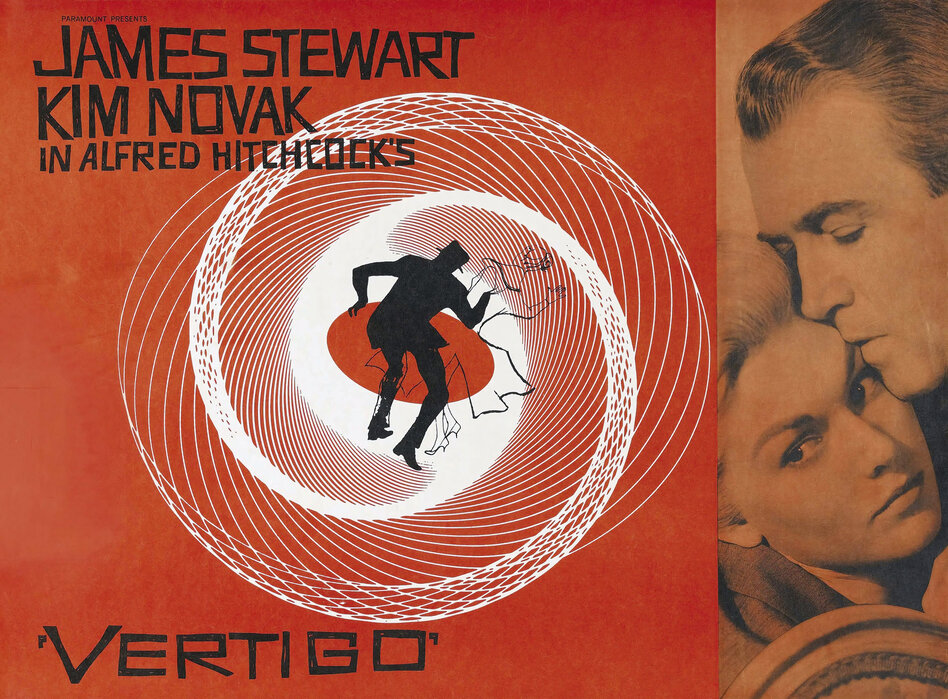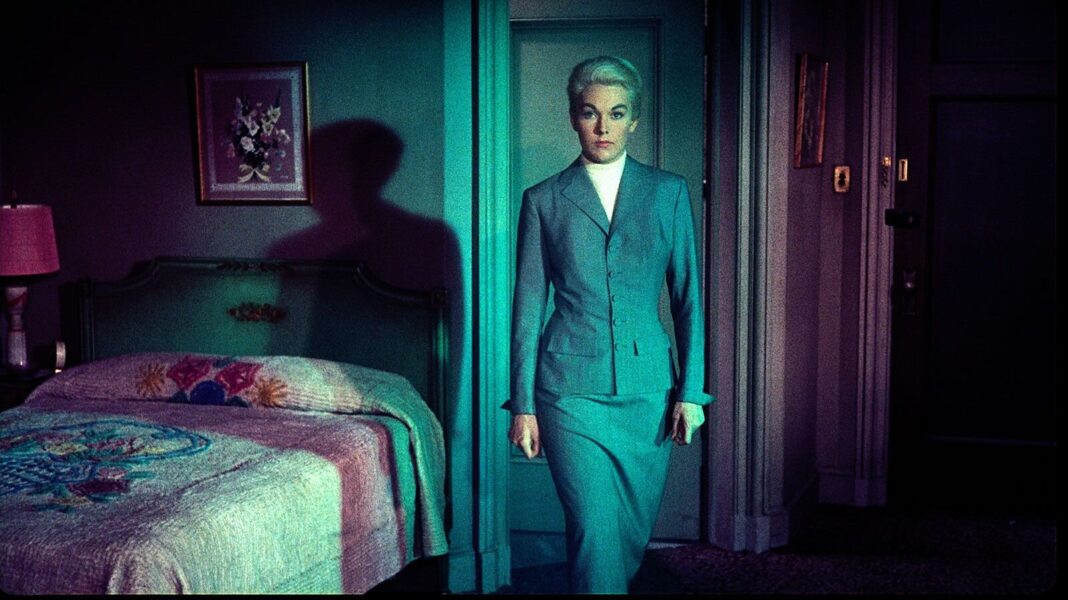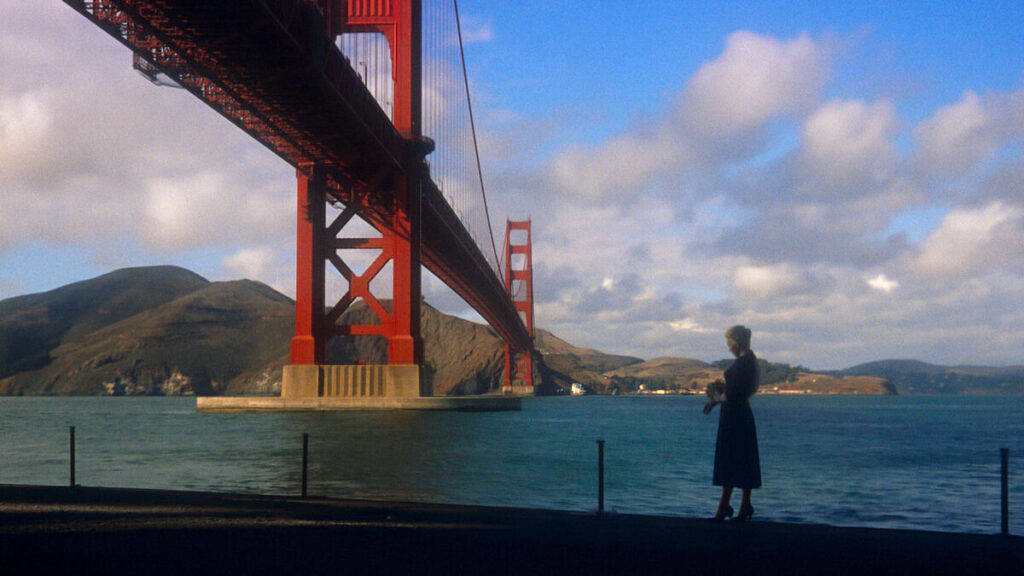The film was shot on location in the city of San Francisco, California, as well as in Mission San Juan Bautista, Big Basin Redwoods State Park, Cypress Point on 17-Mile Drive, and Paramount Studios in Hollywood. It is the first film to use the dolly zoom, an in-camera effect that distorts perspective to create disorientation, to convey Scottie’s acrophobia. As a result of its use in this film, the effect is often referred to as “the Vertigo effect”. In 1996, the film underwent a major restoration to create a new 70 mm print and DTS soundtrack.
Vertigo originally received tepid reviews in 1958. Since its release, it has been considered Hitchcock’s magnum opus, and one of the greatest films of all time.[4] In 1989, it was one of the first 25 films selected by the Library of Congress for preservation in the United States National Film Registry for being “culturally, historically, or aesthetically significant”.[5][6] The film appears repeatedly in polls of the best films by the American Film Institute,[7] including a 2007 ranking as the ninth-greatest American movie ever. Attracting significant scholarly attention, it replaced Citizen Kane (1941) as the greatest film ever made in The Sight & Sound Greatest Films of All Time 2012 poll,[8] and came in 2nd in 2022.


